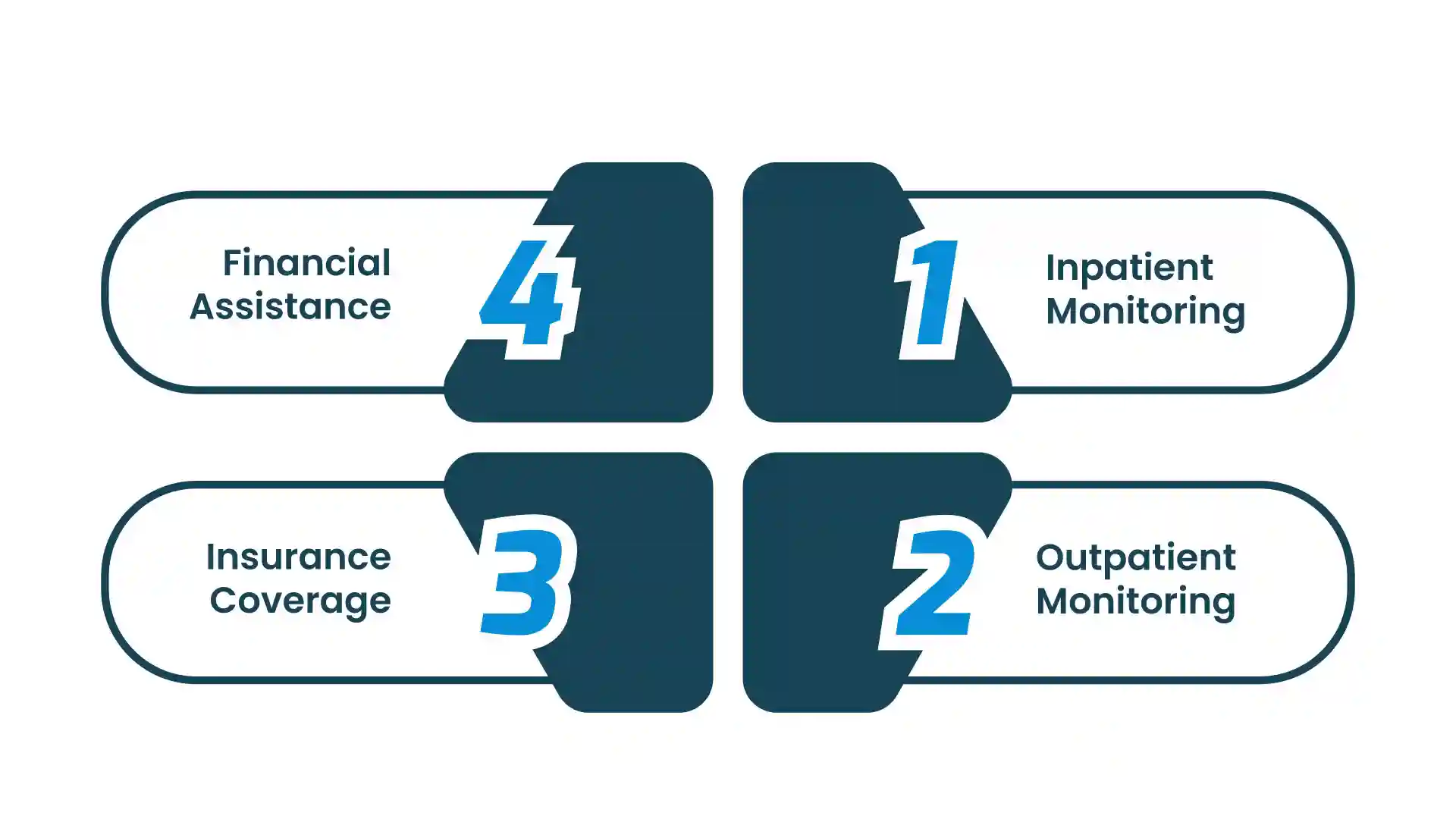

Have you ever wondered what your doctor means when they say you need monitoring for your health condition? Does it involve being confined to a hospital bed with wires and beeping machines, or can you continue your daily life at home while still receiving the necessary care? Rest assured, the answer to this intriguing question is provided below.
In the world of healthcare, two terms are often used to describe medical care: inpatient and outpatient. It’s not just hospital lingo. It actually refers to two very different ways your health can be monitored, and the choice can have a big impact on your treatment and recovery.
In this guide, we will break down the jargon and explore the key differences between inpatient and outpatient and what is the best fit for you By the time you’re done reading, you’ll have a clear understanding of how remote monitoring works and how it could change the way you manage your health.
The terms “inpatient” and “outpatient” refer to the setting where you receive medical care. These settings have significant implications for the type of care you receive, the length of your stay, and even the cost. Let’s break down what each entails:
Where: Inpatient care takes place in a hospital or other medical facility where you are formally admitted as a patient.
Why: You’ll need inpatient care if your condition requires continuous monitoring, intensive treatment, or a recovery period that can’t be managed at home. This can include surgeries, serious illnesses or injuries, and complex medical procedures.
What to Expect: As an inpatient, you’ll typically stay overnight or for several days, depending on your needs. You’ll have a hospital room, receive regular checkups from doctors and nurses, and have access to a range of medical services and equipment.
Where: Outpatient care doesn’t require an overnight hospital stay. It can occur in various settings, including:
Why: Outpatient care is suitable for less severe conditions that don’t require continuous monitoring or a prolonged hospital stay. This could include routine checkups, minor procedures, diagnostic tests, or ongoing treatments like chemotherapy.
What to Expect: You’ll typically visit the healthcare facility for your appointment or procedure and then return home the same day. Depending on the nature of the care you received, you might need to rest or recover at home for a short period.
To truly understand the difference between inpatient and outpatient monitoring, let’s dive deeper into how these two approaches compare in various aspects of care:
Feature | Inpatient Monitoring | Outpatient Monitoring |
Location | Hospital or medical facility | Patient’s home or other non-hospital setting (clinic, etc.) |
Monitoring Frequency | Continuous or very frequent (multiple times per day) | Varies, but generally less frequent (daily, weekly, or as needed) |
Types of Monitoring | Vital signs (heart rate, blood pressure, etc.), lab tests, imaging, etc. | Often focused on specific parameters (e.g., blood sugar, weight) |
Technology Used | Wired monitors, bedside devices, central monitoring stations | Wearable devices, home monitoring kits, smartphone apps |
Healthcare Professionals | Doctors, nurses, specialists readily available | Primarily managed by the patient, with remote check-ins from healthcare providers |
Goal | Immediate intervention for acute changes, comprehensive care | Track progress, manage chronic conditions, early detection of issues |
Patient Experience | May feel restrictive, but offers a high level of security | More freedom and comfort, but requires self-management skills |
The cost of medical care is a significant concern for many patients. While the specifics vary depending on your insurance coverage, the type of monitoring, and the length of care, here’s a general overview of how inpatient and outpatient monitoring expenses compare:

Inpatient Monitoring:
Inpatient monitoring typically incurs higher costs due to several factors. You’re paying for the hospital room, 24/7 nursing care, specialized equipment, and the constant attention of healthcare professionals. Additional expenses can include medications, lab tests, and any procedures performed during your stay.
Outpatient Monitoring:
Outpatient monitoring is often more affordable than inpatient care. You avoid hospital room charges and many of the associated fees. However, you’ll still need to factor in the cost of the monitoring device (if you’re purchasing it), data transmission fees (if applicable), and any consultations with your healthcare provider to review the monitoring results.
Insurance Coverage:
It’s crucial to review your insurance policy carefully to understand what’s covered for both inpatient and outpatient monitoring. Some plans may have higher deductibles or co-pays for inpatient care, while others may have specific requirements for outpatient monitoring to be covered.
Financial Assistance:
If you’re concerned about costs, talk to your healthcare provider or hospital’s financial counselor. They may be able to help you find financial assistance programs, payment plans, or other resources to manage the expenses associated with your care.
In the end, the choice between inpatient and outpatient monitoring isn’t a one-size-fits-all answer. It’s a personal decision that hinges on your individual health needs, lifestyle preferences, and financial considerations. By understanding the distinctions outlined in this guide, you’re better equipped to have informed conversations with your healthcare provider and choose the monitoring option that aligns best with your overall well-being.
Whether you find yourself in a hospital room or the comfort of your own home, rest assured that remote monitoring technology is revolutionizing the way we approach healthcare, empowering you to take charge of your health journey.
I hope this blog post has shed light on the world of inpatient and outpatient monitoring. If you have any further questions, don’t hesitate to reach out to your healthcare provider. Here’s to your health!
Talk to an Expert Now